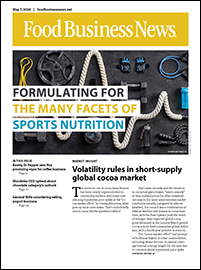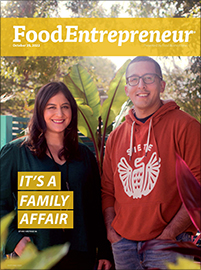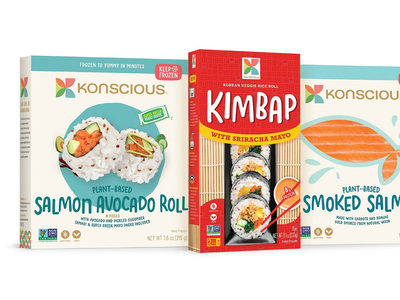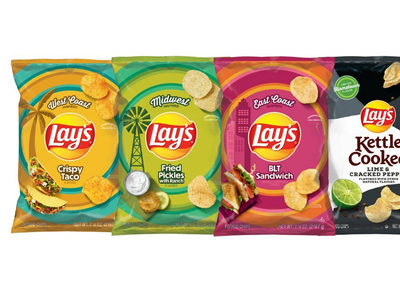NEW YORK —An expert panel of supermarket leaders from Whole Foods Market, Peapod, Walmart.com and others debated the future of on-line grocery shopping versus experiential food retailing during the Summer Fancy Food Show in New York.
“Two weeks ago, our food world changed dramatically,” said moderator Phil Lempert, known as the Supermarket Guru, referring to news of Amazon’s plan to acquire Whole Foods Market and rapid expansion plans by Aldi and Lidl, the latter of which opened its first U.S. stores on June 15. “Lidl surprised everybody with glitzy stores and a focus on fresh and prepared foods.”
Peapod’s Tony Stallone predicts this is the first wave of more to come. “In two years, we are going to see even bigger news,” said the vice-president of merchandising for the nation’s leading internet grocer, which serves 24 markets. “It reinforces our strategy. We want to be everywhere the customer is.”
For anyone selling fresh foods, he urged, it’s imperative to recognize “the ball is the customer.”
But before people start tearing down hundreds of supermarkets to make way for the digital revolution of on-line grocery ordering and home delivery, Cathy Strange of Whole Foods Market takes a more cautionary tone by reminding food executives that “personal touch and interaction are senses to be respected and enjoyed.” As the global executive coordinator of specialty and product development and innovation at Whole Foods, Ms. Strange said trust is everything for consumers.
“We’re like farmers,” she said. “We have to get out there every day and earn it.”
Mr. Lempert predicts the first step by Amazon — once the Whole Foods acquisition is completed — will be to cut prices. He said roughly 90% of Amazon Prime customers live within 10 miles of a Whole Foods Market.
“All of a sudden, there are 461 (Whole Foods) depots for Prime customers,” he said.
Hy-Vee’s newest store in Des Moines, Iowa, allows customers to order on-line and pick up groceries inside lockers located outside the 36,000-square-foot store, the 240-store operator’s first downtown location. This “click-and-collect” model is likely to spread.
“E-commerce is absolutely the way of the future,” said Monica Schechter, specialty and international food category manager for Jet.com and Walmart.com, “but that doesn’t mean you still don’t need stores.” As for what the supermarket of the future will look like, and how big of a component click-and-collect will be for traditional grocers, she added, “We haven’t gotten there yet.”
“For the fresh food customer, it’s all about the experience,” said Scott Zoeller, vice-president of deli prepared foods, cheese, meat and seafood for Parsippany, N.J.-based Kings Food Markets and Balducci’s Market. “In the store, they want to taste it, they want to eat it. At Kings, we’re going to engage you and not only teach you about the product and, whether it’s an ingredient or a meal, help you build on that concept. It’s all about how can we connect to your lifestyle.”
Trip Straub, president and chief executive officer of four-store, St. Louis-based Straub’s Markets, said new products play a fascinating role in the discussion about the future of on-line versus brick-and-mortar stores. “Both worlds can coexist,” he said. “People want to save time, but they also want to discover. For us, the fun part is finding innovative products that customers don’t know they want yet.”
Ms. Schechter says customers, especially millennials, are seeking “very personalized service,” so the goal for e-commerce now revolves around using technology to enhance the experience. “We’re not limited by eye space,” she noted about on-line shopping. “I can carry 12 different kinds of crackers, and the exciting part is to find which of these crackers is most successful.”
She added that millennials often get a bad rap for being too picky.
“Stop blaming millennials for ruining the grocery business,” she said with a smile. ”It’s the other way around.”
For packaged bakery and deli foods, the growth of e-commerce could lead to an explosion of product variety available to consumers because “we don’t have to fill 4,000 stores,” Ms. Schechter said.
Ms. Strange of Whole Foods noted that ordering perishable products on-line is “completely different” than consumer packaged goods, so it’s important to understand what components of the shopping experience need to be filtered to retail stores. The venue component is a key to success at Whole Foods, many of which have sit-down restaurants. “We would be one of the top restaurants in the United States if we were counted as a restaurant,” she said.
So, what might the supermarket of the future look like?
“No doubt, the center of the store is hollowing out,” said Mr. Zoeller of Kings, a chain of 25 stores. “We have a specific definition of what the customer means to us, and what we can do for them. If you don’t have a clear vision compared to your competition, you’re going to struggle.”
“The customer is going to change that 40,000-square-foot space,” said Mr. Stallone of Peapod. “People aren’t buying products anymore. They buy solutions. Maybe (in the store of the future) you’re going to have groups of products that provide solutions.”
Packaging also plays a key role in the future, according to Mr. Straub, because customers are much more willing to try a $6 item when “we can tell the story behind that product.”
Mr. Stallone said the Fancy Food Show plays a vital role in the road to success. “I think this is biggest incubation lab there is,” he said of the show, which attracts more than 40,000 attendees. “At Peapod, we know a lot about our customers, and small trends that are growing rapidly.”
As for the next big trend in fresh food, Mr. Stallone points to health and wellness as “the No. 1 trend, and ancient grains is an example.”
Whole Foods witnesses much greater consumer awareness of plant-based diets — “some of it is lifestyle, some of it is needs,” Ms. Strange said. “As products taste better, you’re going to see a revolution around that. People do care about their bodies.”
Mr. Straub believes it will be increasingly important to be unique in the marketplace, as more on-line activity leads to price comparison shopping.
“Most people who shop at Straub’s and Whole Foods are there for a reason, and it’s not price,” he said. “They are there for the experience, the story behind the product. The future is changing, and our eyes will be wide open.”






